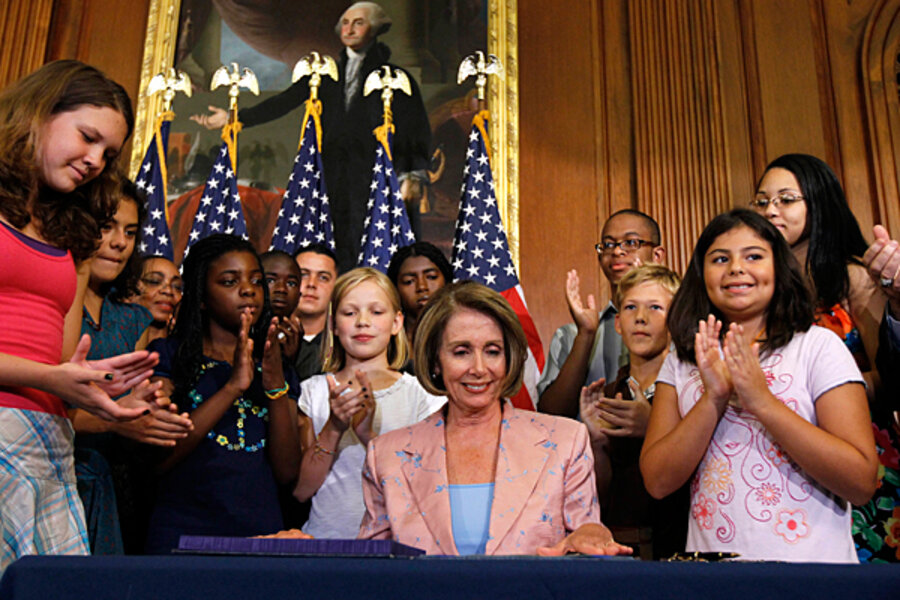19th Amendment: How far have women in politics come since 1920?
Loading...
Ninety years after the 19th Amendment enshrined women’s right to political participation in the US Constitution, women may be having one of their most influential years yet in American politics, analysts say.
The first 50 years of American women’s suffrage was “votes without leverage,” according to a book of the same name by Anna Harvey, a political scientist at New York University. But women’s leverage on politics is now stronger than ever, and it appears to be growing with each successive election cycle.
At least 13 women, a record, will win a major party nomination for the US Senate this year, assuming three female incumbents – Lisa Murkowski (R) of Alaska, Kirsten Gillibrand (D) of New York, and Barbara Mikulski (D) of Maryland – overcome token primary opposition over the next month.
On the unelected side of things, there are three female justices on the Supreme Court, since Elena Kagan was sworn in. Speaker Nancy Pelosi is the first woman to lead the House of Representatives. And America’s secretary of State has been a woman for 10 of the past 14 years, with Madeleine Albright, Condoleezza Rice, and Hillary Rodham Clinton all serving as the country’s chief diplomat.
The changes reflect the changes in the electorate. More women than men have voted in each presidential election since 1960. Four times since 1976, more than 60 percent of women have voted in a presidential election; men have topped the 60 percent turnout mark only once in that span, according to data from Rutgers University’s Center for American Women and Politics.
However, despite progress, a gap does remain between women’s participation in mass politics and women’s participation in the higher levels of the political game, says Jennifer Lawless, a political scientist at American University.
“Women turn out to vote in greater proportions than men, so women can often be the decisive bloc in an election,” Ms. Lawless says. “Still, we don’t see women running for office nearly as much as men do.”
Still, in their collective effect on mass politics, women’s political influence is high. Groups of women are increasingly seen as the key to electoral victory for both parties.
In the 1990s, the decisive bloc was “soccer moms,” the growing class of suburban mothers whose primary concerns were education and the economy. After the 9/11 attacks, “security moms” concerned about terrorism were courted by both parties and credited for fueling George W. Bush’s victory in 2004, in which he got a higher percentage of women’s votes than any Republican presidential candidate since his father.
Lawless says that both parties, and especially Democrats, now recognize that they need vigorous support from women to win elections. This evident in the way they present their platforms to the public. “Women’s issues” are not the focus, but the way women see the issues is.
“Both parties today really try to frame issues in [women’s] terms,” Lawless says. “Security is framed as, 'How to keep the kids safe?' The economy is framed as, ‘How do I put food on the table?’ ‘How do I pay for college?’ ”





